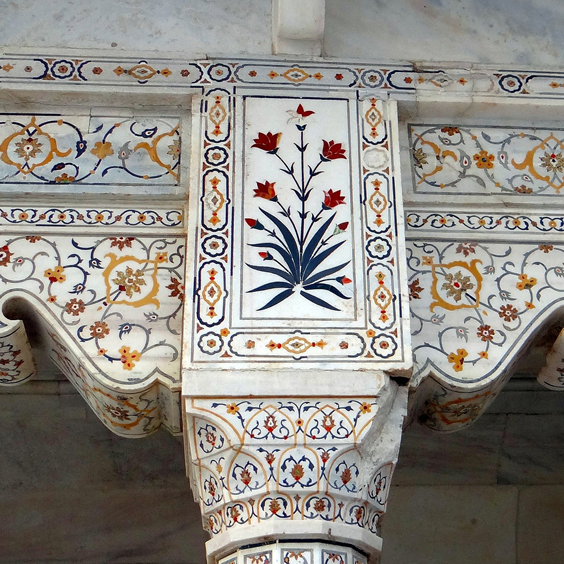The Pietra Dura : Painting in Stone

Pietra Dura or Pietre Dure, often known as ‘painting in stone’ is the art of inlaying stones of different shapes and colors to create a painting. In this technique, highly polished stones are cut and fitted to create decorative art. This is a widely used technique and can be found in a variety of settings ranging from antique jewelry, vintage arts, wall hangings, and so on.
In Italian, the word pietra dura literally indicates ‘hard stone’. Since hard stone inlaying techniques are used in mosaic artworks ( an art form that flourished in Florence, which involves fashioning pictures out of cut-to-shape pieces of colored objects), the pietra dura is very occasionally referred to as ‘Florentine mosaic’ in English.
In general, the term pietra dura simply refers to the hard stones used in such inlaying techniques. It indicates the durability and hardness of the materials (stones) used in those works. Jaspers, quartz, granites, and agates are the most commonly used stones in this decorative art. The works often represent buildings, plants, animals, portraits, geometric shapes, natural settings, floral motifs, etc. Like many other art forms, pietra dura is valued for its capability to combine elegant materials in unexplored ways.
Since it requires high skill and combines the art of sculpture, inlay, and mosaic, the best pietra dura artists from history have always demonstrated a virtuosic mastery of all such techniques.
Brief History
Pietra dura is believed to take its origin in Ancient Rome, where inlays in stone appeared in the form of painting known as opus sectile. The tradition of opus sectile continued throughout the Byzantine Empire ( Eastern Roman Empire) in the Middle Ages and was once again given a new strength in Rome in the 16th Century.
Opus sectile was mostly used for architectural purposes and is considered a separate art form when compared to the modern pietra dura.
Stone inlaying methods were revived by the craftsman of Florence during the 16th century and adapted to their own preferences. They considered this art as a form of painting in stone and this vision is what helped them to fully develop the technique into an art form.
In Italy, merchant families known as the ‘Medici’ contributed to the development of pietra dura during the 16th century. From this century onwards, this art form spread out far from Florence and reached places like the Indian subcontinent. In India, this technique was popularly known as ‘Parfchin Kari’. The most popular Indian building that features this art form is the Taj Mahal.
The technique of Pietra Dura
The basic principle behind pietra dura art is to arrange stones into a pattern in such a way that the resultant works show neatly arranged cut stones with no visible joints between them, in the form of a beautiful painting. The finished work will have stones interlocked, rather like a jigsaw puzzle.
Since this is an inlay technique, the basic outline of the drawing is first traced. The stones of varying colors are cut and polished into different shapes, with roughly the same thickness, according to the design. Cutting would have been done with a variety of objects, used in combination with abrasive pastes that helps to keep smooth edges for the stones.
The arrangement will be made on a perfectly flat support. Usually, the white marble or the black Belgian Marble plate is preferred for the base stone. The design will be cut out of this stone. Colored stones are then inlaid and glued into the corresponding spots. The work is glued stone-by-stone, so precisely in such a way that the contact between each section remains practically invisible.
Any gaps left will be filled with gesso and the completed plaque will then be mostly polished and waxed in order to smooth out the surface of the work.
In this art form, the stones can be inlaid in a variety of creative ways like providing a 3D effect, giving shadows, tonal variations, and so on. The resulting panels are typically, completely flat, but in some cases, the work can appear in the form of a hardstone carving.
The magnificent hardstone inlay works derived from Florentine are notable for their geometric design and the severity of inner patterns. Similar to pietra dura, there are a variety of praise-worthy art forms, which you can take a glimpse of from Qube Art Gallery, an artistic platform dedicated to art enthusiasts who are in search of traditional and contemporary artworks that connect deeply with their souls.




